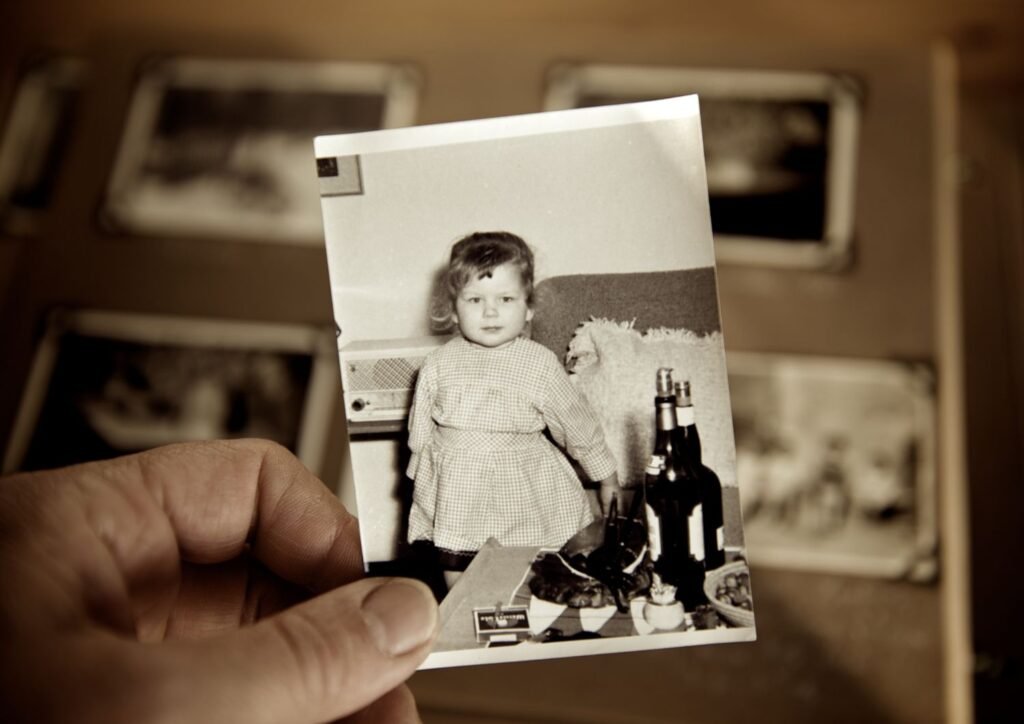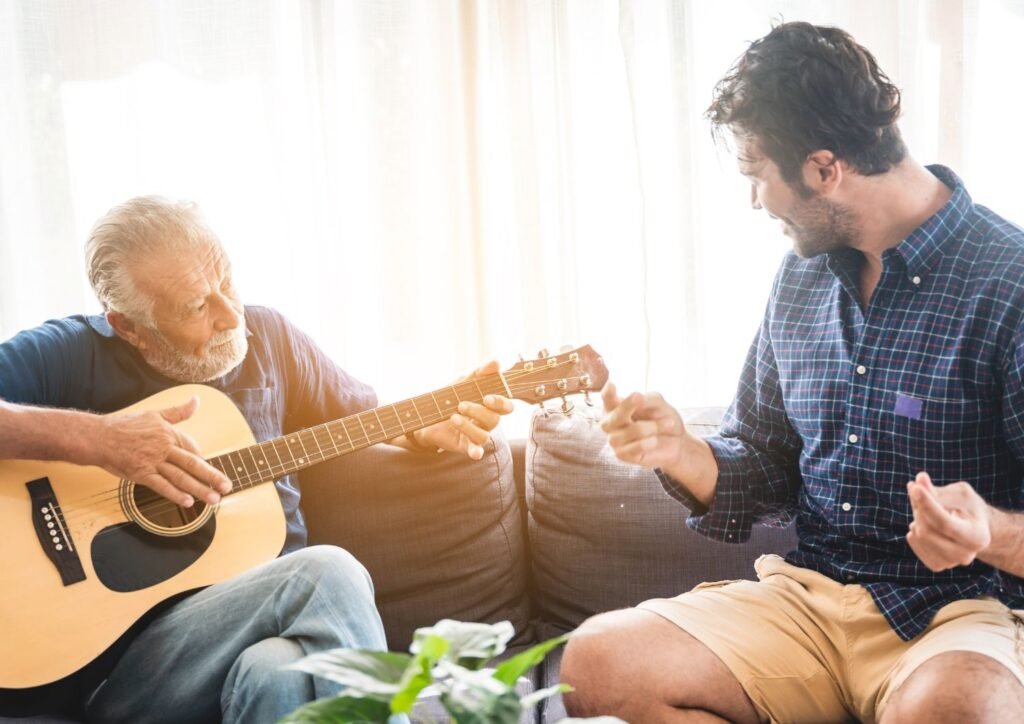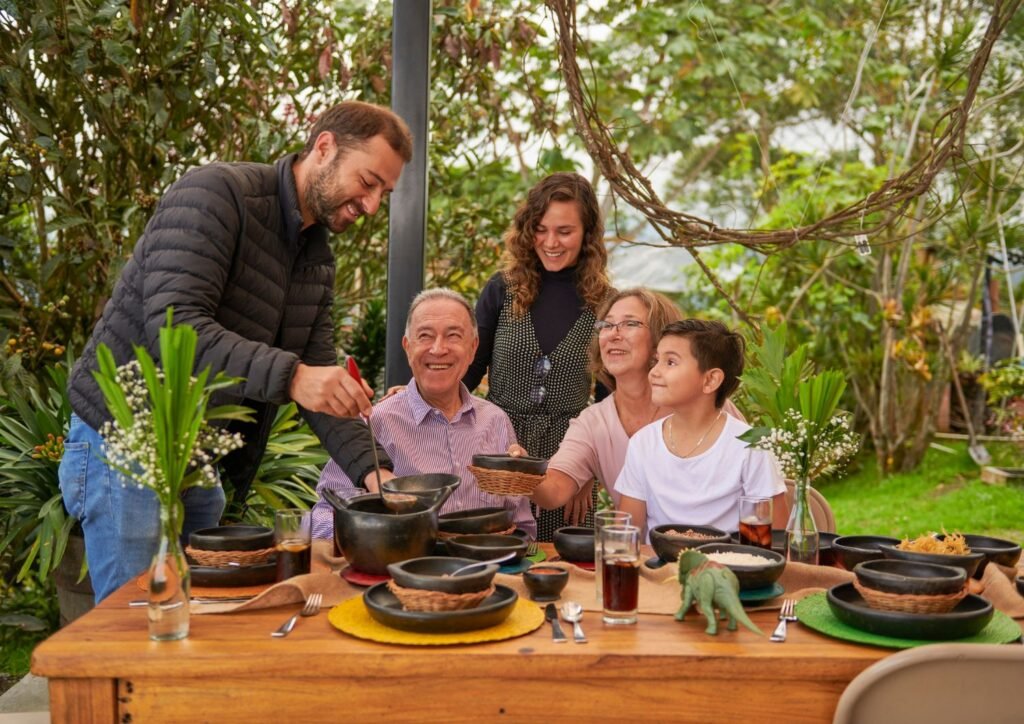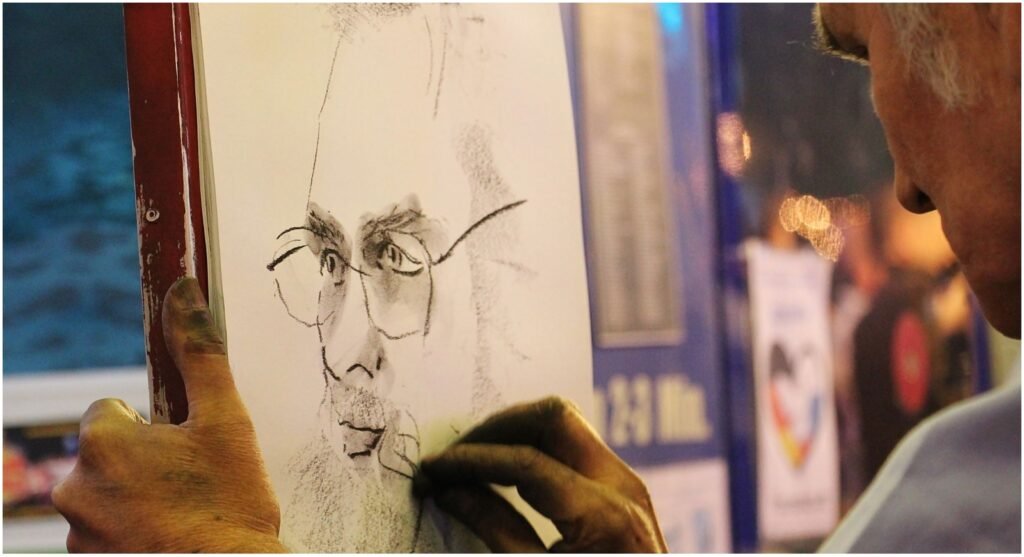How Seniors’ Childhood Memories Ignite Heartfelt Chats

Last Updated on June 30, 2025 by Julian Espinosa
Childhood memories hold extraordinary power to transform ordinary conversations into meaningful connections, especially for mature adults navigating their retirement years. These treasured recollections serve as golden keys that unlock deep emotional bonds, foster intergenerational understanding, and provide a wellspring of wisdom for younger generations.
When seniors share their childhood experiences, they’re not simply reminiscing about the past—they’re offering invaluable life lessons wrapped in captivating stories. Research shows that nostalgia serves as a powerful psychological resource, enhancing well-being, reducing loneliness, and strengthening social connections. These heartfelt conversations bridge generational gaps, allowing families to connect across decades while preserving precious family histories.
This article explores how childhood memories ignite meaningful conversations, the psychological benefits of nostalgic reflection, and practical strategies for encouraging seniors to share their stories. You’ll discover techniques for active listening, methods for digitally preserving these memories, and creative ways to spark engaging discussions that honor the rich tapestry of seniors’ life experiences. Ready to unlock the treasure chest of memories that surrounds you?
The Role of Childhood Memories
Childhood memories function as emotional anchors for mature adults, providing them with a profound sense of identity, purpose, inspiration, and resilience. These recollections offer more than entertainment—they serve as fundamental building blocks for understanding who we are and how we’ve grown throughout our lives.
For seniors, these memories become increasingly significant as they navigate the transitions of retirement and aging. They provide continuity between past and present, helping maintain a coherent sense of self while adapting to life’s changes. Caregivers and loved ones can help seniors preserve their childhood memories through storytelling, photo albums, digital recordings, and other creative methods that honor these precious recollections.
Prefer to listen rather than read?

The Power of Nostalgia
Nostalgia possesses this magical ability to transport us to simpler times, where life felt like a gentle breeze and innocence was our constant companion. It’s like receiving a warm embrace from the past, especially meaningful for those who’ve collected decades of rich experiences on their life journey.
But why do we feel this way? Recent research reveals that nostalgia operates as a resource against loneliness, increases feelings of social support, and enhances psychological well-being through collective effervescence. For mature adults specifically, nostalgia serves as a regulatory resource that cultivates feeling safe and contributes to intrinsic capacity to support healthy aging.
Nostalgia helps seniors feel connected to their past while providing a sense of continuity and purpose. It reminds them of the people and experiences that have shaped their lives, helping them understand who they are today and appreciate their journey.
So, how can you experience that warm sense of nostalgia? Here are several meaningful approaches:

So, you might be wondering, how can we experience that warm sense of nostalgia? Here are a few ways to do it:
Reminisce Together
Engage in conversations with mature adults about their past. Ask them about their childhood, their favorite memories, and the adventures they experienced. Encourage them to share their stories, and listen attentively. These conversations become gifts that honor their experiences while strengthening your relationship.
Dive into Photographs
A picture truly is worth a thousand words, and vintage photographs can serve as treasure troves of memories. Spend quality time looking through family albums together. Allow them to reminisce as they flip through the pages, sharing stories about the people and events captured in the pictures. These visual cues often unlock forgotten details and emotions.
Music from the Past
Music possesses a unique ability to evoke memories and emotions. Studies show that music therapy can enhance various cognitive and psychological aspects, including attention, memory, orientation, depression, and anxiety. Play songs from their youth or melodies that hold special significance. You’ll be amazed at how a familiar tune can transport them back in time, often triggering detailed memories and stories.
Watch Classic Movies or Shows
Viewing movies or television programs from their era creates delightful trips down memory lane. These shared viewing experiences can spark conversations about the culture, fashion, and trends of the time, providing rich context for understanding their formative years.

Recreate Family Traditions
Mature adults often cherish family traditions from their childhood. Try recreating some of these meaningful customs, whether it’s preparing a cherished recipe, celebrating a holiday in traditional ways, or playing a simple game they enjoyed with loved ones. These activities provide tangible connections to their past while creating new memories together.
Visit Familiar Places
When possible, accompany seniors to places that hold special memories—perhaps their hometown, childhood neighborhood, or a significant landmark. The sights, sounds, and familiar surroundings can rekindle nostalgic feelings and unlock stories that might otherwise remain untold.
Engage in Hobbies
Encourage mature adults to pursue hobbies or activities they enjoyed in their youth. Whether it’s painting, gardening, crafting, or playing a musical instrument, these activities can bring back cherished memories while providing ongoing enjoyment and purpose.
Share Stories and Anecdotes
Share your own experiences and stories with seniors. This reciprocal sharing often prompts them to recall and share more of their own memories, creating a beautiful exchange of experiences across generations.

Create Memory Books
Help seniors create scrapbooks or memory journals filled with photographs, mementos, and written recollections that capture their life journey. This ongoing project brings joy and nostalgia while preserving their stories for future generations.
Celebrate Milestones
Acknowledge and celebrate significant milestones in their lives, such as birthdays, anniversaries, or personal achievements. Incorporate elements from their past into these celebrations to make them feel truly special and honored.
Remember, the goal is creating a warm and inviting atmosphere where seniors feel comfortable reliving their cherished memories. It’s a beautiful way to connect with them while honoring the richness of their life experiences.
Life Lessons and Wisdom
The childhood memories that mature adults share are often much more than tales of the past—they represent repositories of valuable life lessons and wisdom. These narratives, drawn from rich life experiences, serve as wellsprings of guidance and inspiration for younger generations.
When seniors recount their childhood memories, they’re not merely reminiscing; they’re passing down knowledge gained through a lifetime of triumphs and challenges. These stories may reveal the importance of perseverance in the face of adversity, the value of empathy and kindness, or the wisdom of making thoughtful decisions during difficult times.
Listening to these childhood memories is like receiving a treasure chest of life advice. It’s comparable to sitting with a wise mentor, absorbing wisdom that only comes from years of living and learning. These tales offer insights into navigating the complexities of relationships, making career choices, or handling unexpected twists and turns in life’s journey.
The beauty of this exchange lies in its ability to bridge generational gaps, connecting the wisdom of the past with the aspirations of the future. Patterns of memory sharing begin early in one’s life, informing relationships, one’s history, and one’s sense of cultural belonging. This fosters a sense of continuity and respect, as younger generations come to appreciate the experiences and hard-earned wisdom of their elders.
When mature adults share their childhood memories, they’re offering not just nostalgia but gifts of guidance and inspiration—legacies of lessons learned that can shape the paths of those who listen. It’s a reminder that every life represents a tapestry of experiences, and within those stories lie seeds of wisdom waiting to be planted in receptive minds.
The Art of Listening
When engaging with seniors and their childhood memories, active listening takes center stage. This skill involves much more than hearing words. It’s about truly understanding and connecting with their experiences.

Active listening proves crucial when engaging with mature adults and their stories. It involves giving seniors your undivided attention, showing genuine empathy, and asking thoughtful questions to encourage them to open up and share more of their precious memories.
Here’s a closer look at the essential elements of active listening:
Giving Full Attention
Active listening begins with a simple yet immensely powerful act: giving seniors your complete attention. When mature adults begin sharing their childhood memories, put aside distractions, whether it’s a buzzing smartphone or a to-do list, and direct your full focus to them.
This means being genuinely present in the moment. Maintaining eye contact demonstrates that you’re engaged and genuinely interested in what they’re sharing. Non-verbal cues like encouraging nods, warm smiles, and facial expressions that mirror their emotions all convey your attentiveness.
This approach helps you grasp the nuances of their stories while communicating deep respect and appreciation for their narratives. Active listening isn’t just about hearing. It’s about creating a space where seniors feel heard and valued, fostering connections that allow their stories to be shared, cherished, and passed down through generations.
Demonstrating Empathy
Empathy serves as the vital emotional bridge connecting you to the childhood memories shared by mature adults. It involves placing yourself in their position and authentically experiencing the emotions they felt during the moments they recount from their past. This goes beyond mere listening. It’s about embracing their feelings and experiences as meaningful and significant.
When responding to seniors’ stories, approach them with warmth and understanding. Acknowledge the depth of their emotions and the significance of their experiences. Simple phrases like “I can imagine how meaningful that must have been” or “That sounds like a truly special moment” carry profound impact. They convey your empathy while validating their feelings and reinforcing that their narratives matter.
This empathetic connection creates a safe and welcoming space for seniors to open up and share their memories more freely. It communicates that you genuinely value their perspective and the wealth of experiences they bring to conversations.
Asking Thoughtful Questions
Asking thoughtful questions plays a pivotal role in unlocking the treasure trove of memories that mature adults carry with them. This skill transforms passive listening into rich tapestries of shared experiences.
Engaging seniors with open-ended questions provides a powerful way to unlock their treasure trove of memories. These questions prompt them to reflect and share in-depth narratives, breathing life into their past experiences.
Through this approach, we foster richer connections, preserve their unique histories, and offer them platforms to share their wisdom and adventures. Open-ended inquiries not only elicit vivid recollections but also honor the depth of their life journeys, creating meaningful connections between generations.

Rather than simply nodding along, well-crafted inquiries invite seniors to expand on their narratives. Questions like “Could you tell me more about that experience?” or “What was it like when that happened?” act as open doorways, inviting mature adults to step through and explore their memories in greater detail.
These questions demonstrate genuine interest while expressing respect for their stories. They empower seniors to relive those moments, bringing their recollections to vivid life. In response, you’ll often find that mature adults become more animated, sharing anecdotes, emotions, and even small, cherished details that make their stories captivating.
When addressing sensitive topics with seniors, approach them with empathy and caution. Communicate your willingness to listen and offer support, creating safe spaces for them to open up. However, always respect their boundaries and avoid pressuring them into sharing if they’re not comfortable doing so.
Digitize a Senior’s Childhood Memories
Preserving a senior’s childhood memories in our digital age offers meaningful ways to ensure their stories live on for generations. Here are several approaches to digitize and safeguard these precious reminiscences:
Video and Audio Recordings
Video and audio recordings provide profoundly immersive methods for preserving mature adults’ memories. Beyond mere words, they capture rich tapestries of emotions, expressions, and unique storytelling styles that define individuals’ lives, offering timeless windows into their worlds.
This personal touch adds depth and authenticity to their narratives. Before digitizing, it’s crucial to prioritize the senior’s consent and comfort throughout the process.
When documenting people’s narratives, always request their consent for digital recording and sharing. Equally important is recognizing and honoring their personal boundaries concerning what they feel comfortable sharing with wider audiences. Respect for their limits ensures ethical and considerate storytelling.
Digital Scrapbooks
Create digital scrapbooks by scanning vintage photographs, letters, diaries, and other memorabilia. These digital compilations add visual dimensions to their stories, allowing younger generations to see the people, places, and objects that were significant in their lives.
Professional Services
Consider utilizing professional services that specialize in digitizing and archiving personal histories. These experts provide guidance on preserving memories while ensuring protection from deterioration and loss. They may also assist in organizing and cataloguing digital content for easy access.
Store digitized memories on cloud platforms or digital archives that offer secure and accessible storage. This ensures memories remain safe from physical damage or loss while being easily shareable with family members and future generations.
Multimedia Presentations
Combine video, audio, images, and text to create multimedia presentations that bring seniors’ stories to life. These presentations can be shared during family gatherings or special occasions, allowing everyone to relive and celebrate these cherished memories together.
As you digitize memories, consider adding annotations or captions to provide context and details. Cataloguing digital files in organized manners ensures future generations can easily navigate and appreciate these collections.
Digitizing a senior’s childhood memories isn’t just about preserving the past—it’s about passing on legacies of experiences, wisdom, and personal history.
Passing Down Wisdom
Passing down wisdom through childhood memories represents a precious gift that mature adults offer to younger generations. These stories and experiences from their past aren’t just fragments of history but invaluable life lessons, brimming with guidance and insights that can shape the paths of their children and grandchildren.
As seniors recount their memories, they weave tapestries of experiences that illustrate principles they’ve learned over lifetimes. These stories often carry moral lessons, demonstrating the consequences of choices and the importance of values like perseverance, compassion, and resilience. They provide real-life examples that bring abstract concepts to life.

Research shows that intergenerational programs involving older adults and younger people provide benefits to both groups, including improved wellbeing, cognitive engagement, and identity formation. Younger generations absorb this wisdom eagerly, listening to tales of triumphs and tribulations while gaining knowledge that can’t be found in textbooks.
Mature adults become mentors not through lectures but through narratives that provide context and relevance to life’s challenges. Through sharing these stories, generational bonds strengthen. It’s a way of passing along torches of experience and insight, ensuring that collective family wisdom carries forward.
These tales become part of family lore, creating senses of continuity and connection as younger members gain deeper appreciation for the resilience and wisdom of their elders.
Bridging Generational Gaps
The tales of seniors’ childhood are more than stories—they’re bridges that gracefully span generational gaps. Research demonstrates that intergenerational engagement significantly impacts older adults’ cognitive, social, and health outcomes while providing benefits for younger participants. These narratives offer rare and invaluable opportunities for younger individuals to step into the past and gain profound understanding of the world as it once existed.

Moreover, sharing stories fosters profound connections and empathy between generations. It allows younger individuals to see their mature family members not just as elders but as fellow travelers through life’s journey. This builds bridges of understanding and mutual respect, eroding barriers that generational gaps can sometimes create.
When families engage in these meaningful conversations, they create lasting bonds that transcend age differences. The wisdom flows both ways—while younger generations gain insights from experience, mature adults often find fresh perspectives and renewed energy from engaging with younger family members.
Conclusion
In a fast-paced world where meaningful connections can sometimes seem elusive, seniors’ childhood memories emerge as beacons of light. Their stories, rich with nostalgia, wisdom, and life lessons, have the power to kindle heartfelt conversations and bridge generational gaps.
As we actively listen to and preserve these stories, we not only honour our seniors but also ensure that their legacy endures.
FAQ: Childhood Memories
- How often should I encourage a senior to share their childhood memories?
- There’s no set frequency. Let their comfort and energy levels guide you. Some mature adults enjoy daily reminiscing, while others prefer weekly storytelling sessions. Watch for cues that they’re engaged and enjoying the conversation, and respect when they need breaks.
- What if a senior becomes emotional while sharing memories?
- Emotional responses are completely normal and healthy. Offer comfort and support, validate their feelings, and let them know it’s okay to feel emotional about meaningful memories. Sometimes tears accompany joy, grief, or nostalgia—all are natural parts of the remembering process.
- How can I encourage a reluctant senior to share their stories?
- Start small with specific questions about objects, photos, or familiar songs. Share your own memories first to create reciprocal conversations. Be patient and don’t pressure them. Sometimes it takes time to feel comfortable opening up about personal experiences.
- Are there any memories I should avoid asking about?
- Be sensitive to potentially traumatic experiences like wars, losses, or difficult family situations. While some seniors may want to share these experiences, others may find them too painful. Follow their lead and respect their boundaries about what they’re comfortable discussing.
- How can I preserve these memories for future generations?
- Consider multiple preservation methods: audio recordings, video interviews, written transcriptions, digital scrapbooks, or professional memory preservation services. Cloud storage ensures these memories remain accessible and safe from physical damage.
- What if the senior’s memory isn’t accurate about certain details?
- Focus on the emotional truth and meaning of their memories rather than factual accuracy. Memories naturally change over time, but the feelings and lessons they contain remain valuable. Avoid correcting them unless it’s absolutely necessary for safety reasons.
- Can sharing childhood memories help with dementia or memory loss?
- Yes, reminiscence therapy is often beneficial for people with cognitive changes. Research shows that nostalgic activities and memory sharing can enhance cognitive and psychological aspects while reducing anxiety. However, always consult with healthcare providers for personalized approaches.
- How can I make memory-sharing sessions more engaging?
- Use props like old photographs, music from their era, vintage objects, or familiar foods. Create comfortable environments with good lighting and minimal distractions. Consider themed sessions around holidays, seasons, or specific life stages.
References
- Frontiers in Psychology. (2021). Current Issues in Nostalgia Research. Retrieved from https://www.frontiersin.org/journals/psychology/articles/10.3389/fpsyg.2021.713534/full
- Journal of Personality and Social Psychology. (2024). Reliving the Good Old Days: Nostalgia Increases Psychological Wellbeing Through Collective Effervescence.
- Frontiers in Psychology. (2022). Feeling Safe and Nostalgia in Healthy Aging. Retrieved from https://www.frontiersin.org/journals/psychology/articles/10.3389/fpsyg.2022.843051/full
- Frontiers in Psychology. (2025). Exploring the effects of combined nostalgic activities and music therapy on Alzheimer’s disease outcomes. Retrieved from https://www.frontiersin.org/journals/psychology/articles/10.3389/fpsyg.2025.1526761/full
- ScienceDirect. (2021). A systematic review of the impacts of intergenerational engagement on older adults’ cognitive, social, and health outcomes.
- Frontiers in Psychology. (2022). The role of intergenerational family stories in mental health and wellbeing. Retrieved from https://www.frontiersin.org/journals/psychology/articles/10.3389/fpsyg.2022.927795/full
- Taylor & Francis Online. (2023). Effectiveness of Intergenerational Exchange Programs Between Adolescents and Older Adults: A Systematic Review.





